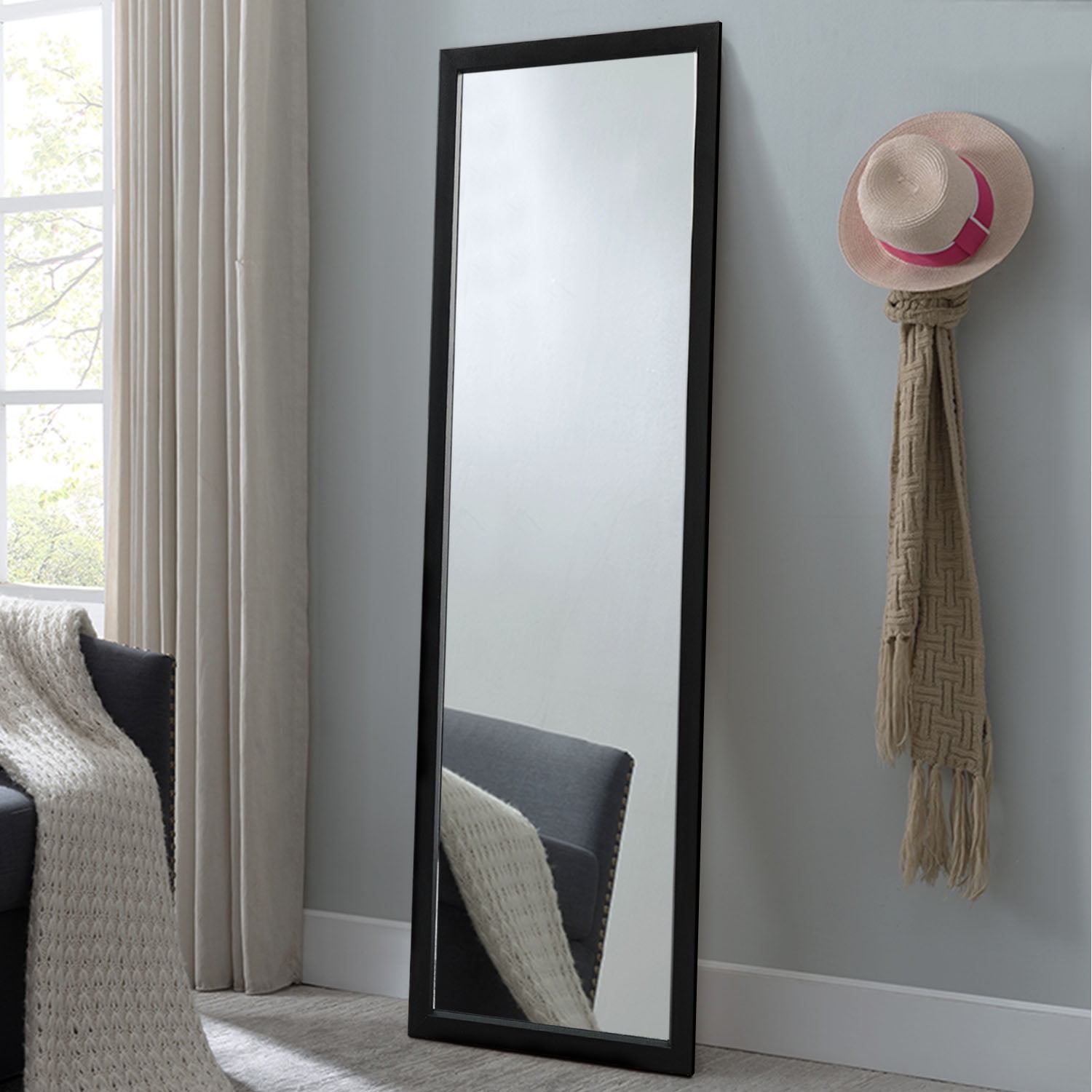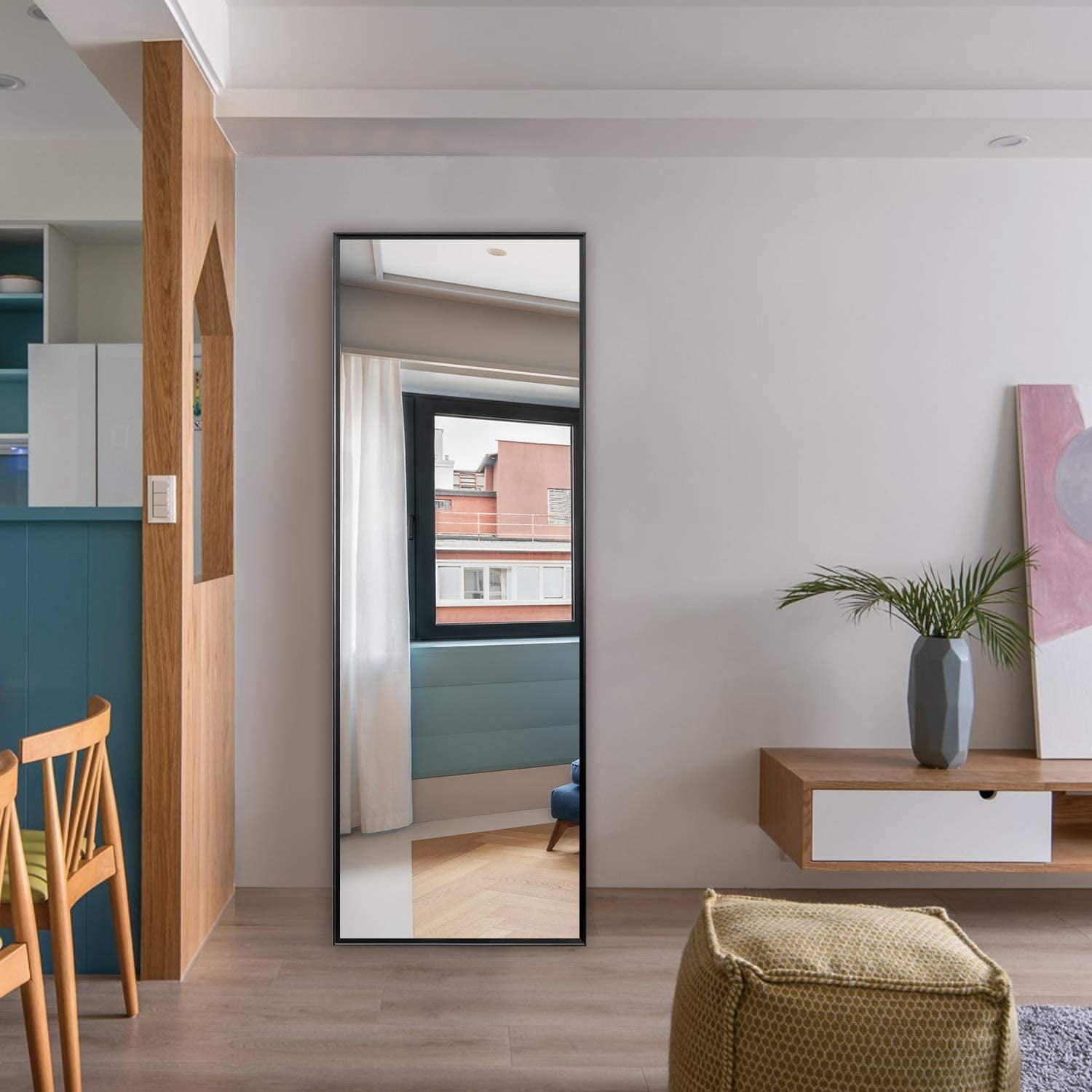The Appeal of Hanging Wall Mirrors in Bedrooms: Hanging Wall Mirrors For Bedroom

Hanging a wall mirror in your bedroom can transform the space, making it feel larger, brighter, and more inviting. Mirrors reflect light, creating the illusion of more space and adding a touch of elegance to the room. They can also be used to highlight specific features or create a focal point.
Enhancing Perceived Size and Brightness
Mirrors are a powerful tool for enhancing the perceived size and brightness of a bedroom. They reflect light, making the room appear larger and more spacious. This effect is particularly beneficial for smaller bedrooms, where every inch of space counts. Placing a mirror opposite a window can maximize natural light, making the room feel brighter and more welcoming.
Design Ideas for Spaciousness and Depth
Mirrors can be strategically placed to create a sense of spaciousness and depth in a bedroom. For instance, placing a large mirror behind a headboard can make the room appear longer and more expansive. A mirror placed on a narrow wall can create the illusion of a wider space.
“Mirrors can make a small room appear larger by reflecting light and creating the illusion of more space.” – [Interior Design Expert]
Types of Hanging Wall Mirrors for Bedrooms

A bedroom mirror is an essential piece of furniture, not only for its practical use but also for its ability to enhance the overall aesthetic appeal of the space. With a wide variety of styles, materials, and designs available, choosing the right mirror can be a daunting task. This section will provide a comprehensive overview of the different types of hanging wall mirrors suitable for bedrooms, exploring their unique characteristics, benefits, and potential drawbacks.
Mirror Styles
Mirror styles vary significantly, catering to different tastes and interior design preferences. Popular options include:
- Framed Mirrors: Framed mirrors offer a classic and elegant look. The frame adds a decorative element, enhancing the mirror’s visual appeal and providing a polished finish. Frames can be made from various materials, including wood, metal, and plastic, allowing for a wide range of styles and finishes. Wooden frames provide a warm and traditional feel, while metal frames offer a more modern and contemporary aesthetic. Plastic frames are a budget-friendly option, available in a variety of colors and designs.
- Unframed Mirrors: Unframed mirrors have a minimalist and contemporary look. They create a clean and uncluttered aesthetic, allowing the mirror itself to be the focal point. Unframed mirrors are often preferred in modern or minimalist bedrooms, where simplicity and clean lines are highly valued.
- Beveled Mirrors: Beveled mirrors feature edges that are cut at an angle, creating a subtle reflection and adding depth and dimension to the mirror. Beveled mirrors are often used in traditional or formal settings, adding a touch of elegance and sophistication.
- Antique Mirrors: Antique mirrors are characterized by their aged appearance, often featuring distressed finishes, ornate frames, and unique patterns. They add a touch of history and character to the bedroom, creating a vintage or eclectic ambiance.
- Vanity Mirrors: Vanity mirrors are designed specifically for dressing tables or vanities. They often feature a magnifying section for detailed makeup application and may have additional features such as built-in lighting or adjustable angles.
- Full-Length Mirrors: Full-length mirrors are ideal for checking your outfit from head to toe. They are typically tall and rectangular, providing a complete reflection of your body. Full-length mirrors are often placed in the bedroom’s dressing area or against a wall.
Mirror Materials
The material used for the mirror frame plays a crucial role in its overall look and feel. Common materials include:
- Wood: Wood frames offer a warm and natural aesthetic. They are available in a wide range of styles, from rustic and farmhouse to sleek and contemporary. Wood frames can be stained or painted to match the bedroom’s decor.
- Metal: Metal frames provide a modern and industrial look. They are available in various finishes, including silver, gold, brass, and black. Metal frames can add a touch of sophistication and elegance to the bedroom.
- Acrylic: Acrylic frames are a lightweight and durable option. They are available in a variety of colors and designs, offering a contemporary and stylish look. Acrylic frames are also resistant to moisture and scratches, making them a practical choice for humid environments.
Design Features
Beyond the basic style and material, there are several design features that can enhance the visual appeal and functionality of bedroom mirrors. These include:
- Shape: Mirrors come in a variety of shapes, from traditional rectangular and square to more unique shapes like oval, round, and even geometric designs. The shape of the mirror can significantly impact its visual impact and overall aesthetic.
- Size: The size of the mirror is crucial for its functionality and visual impact. A small mirror can add a touch of sparkle to the room, while a large mirror can create the illusion of more space.
- Lighting: Mirrors can be integrated with lighting features, such as built-in LEDs or sconces. Lighting can enhance the mirror’s reflection and create a warm and inviting ambiance in the bedroom.
Mirror Types Comparison Table
| Mirror Type | Features | Benefits | Drawbacks |
|---|---|---|---|
| Framed | Classic and elegant look, variety of materials and finishes | Adds decorative element, enhances visual appeal, provides a polished finish | Can be bulky and heavy, may not suit minimalist styles |
| Unframed | Minimalist and contemporary look, clean and uncluttered aesthetic | Creates a modern and sleek feel, allows the mirror itself to be the focal point | May not be as durable as framed mirrors, can be prone to scratches |
| Beveled | Edges cut at an angle, creating a subtle reflection and depth | Adds elegance and sophistication, enhances visual interest | Can be more expensive than other mirror types, may not suit all styles |
| Antique | Aged appearance, distressed finishes, ornate frames, unique patterns | Adds history and character, creates a vintage or eclectic ambiance | May not be suitable for modern or minimalist bedrooms, can be difficult to clean |
| Vanity | Designed for dressing tables, often features a magnifying section, may have built-in lighting | Provides detailed reflection for makeup application, offers additional functionality | Can be bulky and take up space on the vanity, may not be suitable for all bedrooms |
| Full-Length | Tall and rectangular, provides a complete reflection of the body | Ideal for checking outfits, creates a sense of spaciousness | Can be large and take up space, may not be suitable for small bedrooms |
Placement and Styling of Hanging Wall Mirrors in Bedrooms

Mirrors are a versatile design element that can transform a bedroom’s aesthetic and functionality. Strategic placement and styling can enhance the space, making it appear larger, brighter, and more inviting.
Mirror Placement Strategies
The placement of a mirror significantly impacts its effectiveness. Here are some common strategies:
- Opposite a Window: Placing a mirror opposite a window maximizes natural light, creating a brighter and more spacious feel. This is particularly beneficial for smaller bedrooms with limited natural light.
- Above a Dresser or Vanity: Mirrors placed above a dresser or vanity serve a practical purpose, allowing for easy grooming and enhancing the visual appeal of the furniture piece.
- Behind a Bedside Table: A mirror placed behind a bedside table can reflect light and create a sense of depth, making the space feel larger.
- On a Wall with Architectural Features: Mirrors can highlight architectural features such as a fireplace or a unique molding design, drawing attention to the room’s character.
- On a Blank Wall: Mirrors can break up a large blank wall, adding visual interest and dimension. They can be used in conjunction with artwork or other decorative elements to create a focal point.
Determining Optimal Mirror Size and Shape
The size and shape of a mirror should complement the bedroom’s dimensions and existing furniture.
- Small Bedrooms: Opt for smaller, rectangular or square mirrors to avoid overwhelming the space.
- Large Bedrooms: Larger, oversized mirrors can create a sense of grandeur and balance in a spacious room.
- High Ceilings: Vertical mirrors can visually elongate the room and make the ceilings appear higher.
- Low Ceilings: Horizontal mirrors can widen the space and create a more balanced feel.
- Furniture Placement: Consider the size and shape of furniture pieces when selecting a mirror. A mirror that is too small or too large can disrupt the visual flow of the room.
Using Mirrors to Highlight Architectural Features or Furniture, Hanging wall mirrors for bedroom
Mirrors can be used to draw attention to specific architectural features or furniture pieces, enhancing the overall design aesthetic.
- Fireplace: Placing a mirror above a fireplace creates a sense of depth and reflects the flames, enhancing the visual impact of the focal point.
- Architectural Molding: Mirrors can be placed to accentuate decorative molding, highlighting the room’s unique design elements.
- Statement Furniture: A mirror placed behind a statement piece, such as a vintage dresser or a unique headboard, can draw attention to the furniture and create a visual focal point.
Creative Styling Ideas
Mirrors can be styled with decorative elements to create a cohesive and visually appealing design.
- Plants: Placing plants on either side of a mirror adds a touch of nature and softens the reflective surface. This is especially effective with large mirrors.
- Artwork: Mirrors can be used to create a gallery wall, incorporating artwork and other decorative elements. The reflection of the artwork adds depth and visual interest.
- Lighting: Placing a mirror behind a light fixture can amplify the light source, creating a brighter and more inviting ambiance.
Hanging wall mirrors for bedroom – Hanging wall mirrors in your bedroom can instantly make the space feel larger and brighter! To really elevate the look, consider incorporating a green bedroom feature wall – it’s a bold and stylish choice that adds a touch of nature and serenity.
The reflection of the green wall in the mirror will create a beautiful and dynamic interplay of color and light, making your bedroom feel even more spacious and inviting.
Hanging a wall mirror in your bedroom can instantly create the illusion of more space and brighten up the room. But if you’re looking for a more dramatic transformation, consider adding a statement piece like designer tiles for bedroom wall.
These tiles can be used to create a stunning accent wall or even a full-fledged tile feature that will truly make your bedroom stand out. And don’t forget, a strategically placed mirror can always complement the unique character of your tiled wall, adding a touch of glamour and depth.